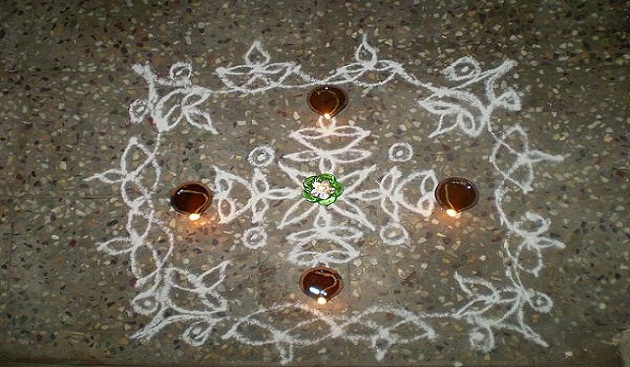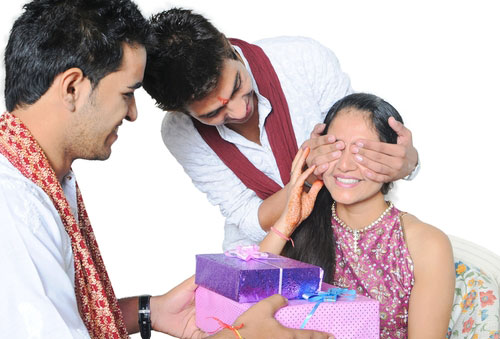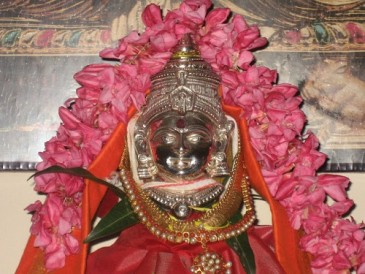It is customary to draw a kolam or rangoli at the entrance of the house.
In olden days, the entrance to the house was usually a mud flooring. So water was sprinkled early in the morning so that the surface will not be eroded by the morning breeze and also to prevent dust from entering the house. Cowdung was mixed with water and sprinkled to act as a disinfectant. The ladies coming out to draw the kolam early in the morning had the benefit of ozone also.
Previously the kolam was drawn only with rice flour. This was done so that crows, squirrels, ants may all eat the rice flour from the kolam. This is supposed to be one of the “ Pancha Maha Yagnas” which form the daily duties of a Hindu & is called “ Bhutha Yagna” which is intended to create in man, the spirit of sharing with all living beings.
The kolam is a free hand drawing and a traditional form of art. These designs are believed to produce positive cosmic forces which will improve the lot of people who dwell in the house. We can also interpret it in the modern context as a sign of welcome to all people who come to the house. They denote a prayer “ let there be happiness & cheerfulness when anybody steps into the house.” If there is an artistic design, nobody will dirty the place also ! It is supposed to prevent undesirable elements from entering the house. This is specially taken care of by the red “ kaavi” lines drawn around the white kolam. The red kaavi lines are supposed to block the negative energy. Thus the white kolam surrounded by red kaavi lines, separates the auspicious, pure, protected, and safe world of the home from the inauspicious, impure, unprotected, and dangerous world of the outside.
There are intricate kolams which are drawn with many dots. Completing them successfully needs a lot of concentration and patience.This gives a good training to our mind that whatever be the situations in life, we must learn to emerge out of them smoothly and tactfully.
Besides giving aesthetic beauty at the entrance, the kolam also provides a physical exercise for the women, early in the morning. The bending and drawing the kolam gives a good exercise to the waist and hips, thereby strengthening them and giving them flexibility.
The kolam is also supposed to honour, Lakshmi Devi, the Hindu Goddess of wealth & prosperity & to invite her blessings into the home. It is the best artistic outlet for a woman to start the day auspiciously.
For important occasions and pujas, it is customary to soak raw rice, grind fine and draw kolam with it. When it becomes dry, it just sparkles invitingly, surrounded by red “ kaavi”.
Posted below is a sample photo of “Maa kolam “ ( mentioned last ), drawn for all auspicious functions, at the entrance.






